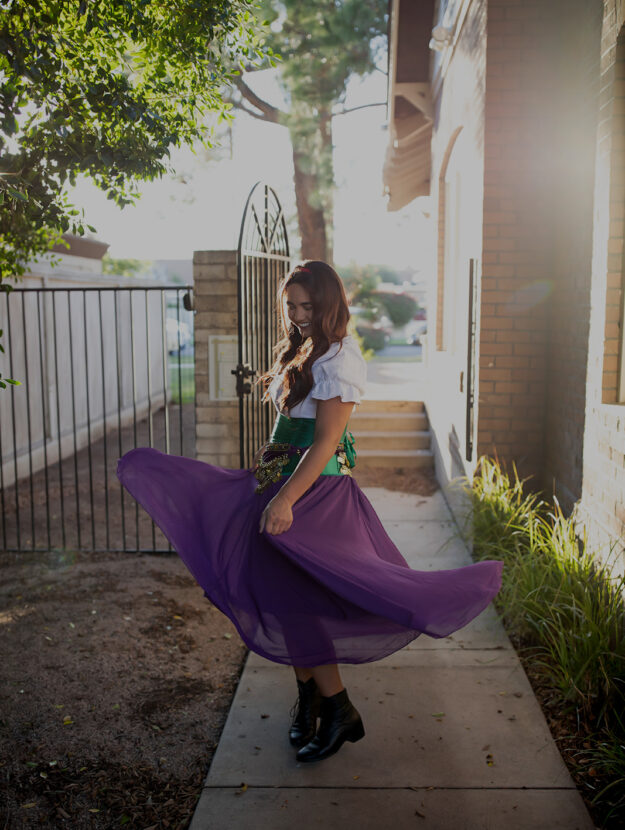Anyone who grew up in the early 2000s remembers the chokehold Abercrombie & Fitch had on our generation during that time. I remember seeing the shirtless men on the bags, which were toted around the mall by every “cool” girl. Maybe that’s why I couldn’t stop myself from watching the new documentary White Hot: The Rise and Fall of Abercrombie & Fitch now streaming on Netflix.
The documentary held my interest. While the beginning started off somewhat slow (after all, I’m well aware of how popular Abercrombie was and their hiring practices at the time), the second half documenting their demise was fascinating. Former employees spoke openly about Abercrombie’s hiring practices and treatment of employees (although a lot had been covered in interviews during their 2004 lawsuit) and they discussed how Abercrombie shifted from an iconic “cool” brand to something no one wanted to be seen in.
So, maybe the documentary didn’t dredge up anything new; it just rehashed old news. However, there is still a lot that can be learned from Abercrombie’s rise and fall.
I turned 16 in 2012. While mall culture was already on the way out, I still grew up spending my weekends at the mall with friends. So when I turned 16, I wanted to work there just like everyone else. I, too, turned in my job application at the local Abercrombie and Hollister and remember looking around the staff and thinking to myself ‘I don’t look like the right person for this job.’ I had that feeling a lot of other times growing up, but that was the first time I remembered it clearly.
While I didn’t know it at the time, Abercrombie was already on the decline.
A brand built on Exclusion
Abercrombie’s rise was built on the idea of exclusion and, although unsaid, discrimination.
We go after the cool kids. We go after the attractive all-American kid with a great attitude and a lot of friends. A lot of people don’t belong [in our clothes], and they can’t belong. Are we exclusionary? Absolutely.
Former Abercrombie CEO Mike Jeffries, 2006
There is a laundry list of things that demonstrate the ways Abercrombie built a brand on discrimination. They wanted those with an “all-American” look at the forefront of the store, “all-American” being the key-word for caucasian, preferably with blue eyes and blonde hair. The brand refused to carry plus-sizes for years. After all, the CEO didn’t want plus-sized people associated with the brand. Graphic tees with racist imagery were stocked on the shelves.
In corporate material, the brand banned store staff from having dreadlocks. Performance reviews ranked employees in order of appearance and fired those who didn’t make the cut. In 2004, the company settled a class-action lawsuit brought against them for race and sex discrimination. In 2015, a case made it to the supreme court because Abercrombie refused employment to a Muslim woman on the basis that her hijab wasn’t dress code.
A Lesson in Diversity and Inclusion
In the world of corporate speak, there is a very important term: tone at the top. From the top down, Abercrombie embraced exclusivity and discrimination at every turn. Corporate leaders told stores who to hire and who to fire, all based on a particular look they wanted to sell.
Not only did they face lawsuits, they faced a backlash from their customers. Sure, the CEO might have wanted an “exclusionary” brand. But when you exclude your customer base, what then?
As culture shifted toward being more inclusive, Abercrombie was behind the curve. Maybe they embraced having more people of color working at their stores, but their core leadership still remained predominantly white, a problem that still plagues many companies today.
Now – that being said – it’s easy to put all the blame on the former CEO Mike Jeffries. He promoted that vision of thinness, whiteness, and eurocentric features, but a company that grew as large and popular as A&F did had more than just one man building the brand.
Where is Abercrombie now?
Jeffries left the company in 2014. In 2017, Fran Horowitz was appointed as CEO. Sales have grown since their plunge in the mid-2010s and their image now more closely aligns with the inclusivity and diversity that millennials and Gen Z value. I can even personally speak to their line of Curve Jeans, designed with curves in mind. Their sizes now go up to a 24, a far cry from their refusal to stock anything larger than a size 10 back in their Jeffries era.
Like any modern brand, they follow the ‘trend’ of selling shirts for Black History Month and Pride Month. They are hardly leaders in a diversity space, nor do they create the waves they used to when it comes to fashion trends.
What is the takeaway in 2022?
From a business perspective, being a leader isn’t always necessary. However, it’s essential to brands that they remain level with competitors in the diversity and inclusion space. It’s not a good look to have BIPOC influencers claiming they were asked to work for free on campaigns while white influencers were paid. “Tokenism” still remains a key factor to look for in hiring practices and marketing materials.
In 2022, millennials and Gen Z place a higher priority on brands who emphasize diversity, sustainability, and ethical practices. If a fashion brand doesn’t have all of them, they better work to have at least one.
It’s not ‘cool’ to be exclusionary anymore; brands in 2022 are built off the platform of inclusion. Beauty brands that show freckles and blemishes are the norm. Models (even Victoria Secret models) are less airbrushed with visible stretch marks.
If nothing else – Abercrombie’s demise show that values are shifting. Diversity and inclusion is important to the average consumer. If you don’t want to fade away, as every other fashion fad has gone in the past, you have to keep up with the changing values of society.







